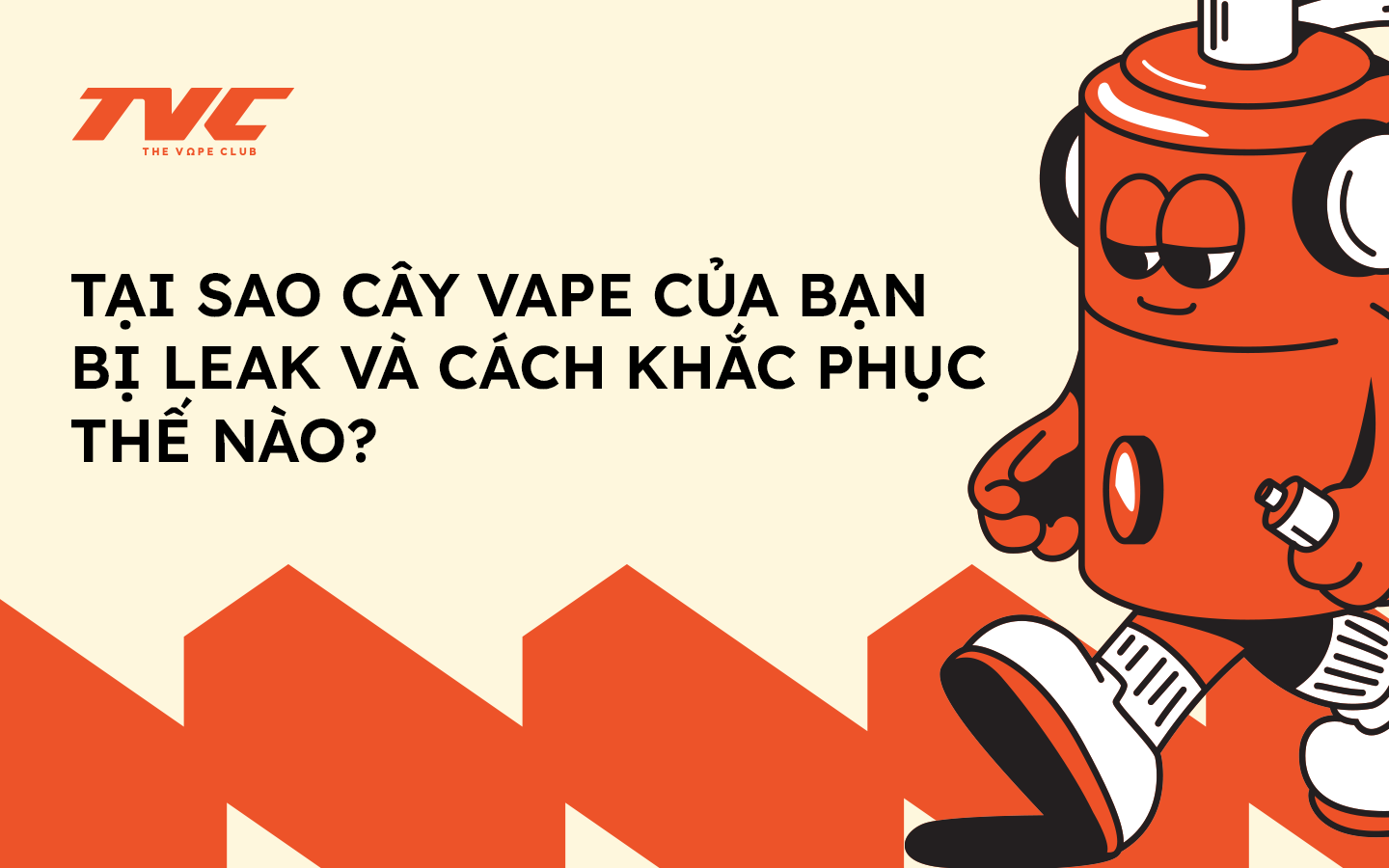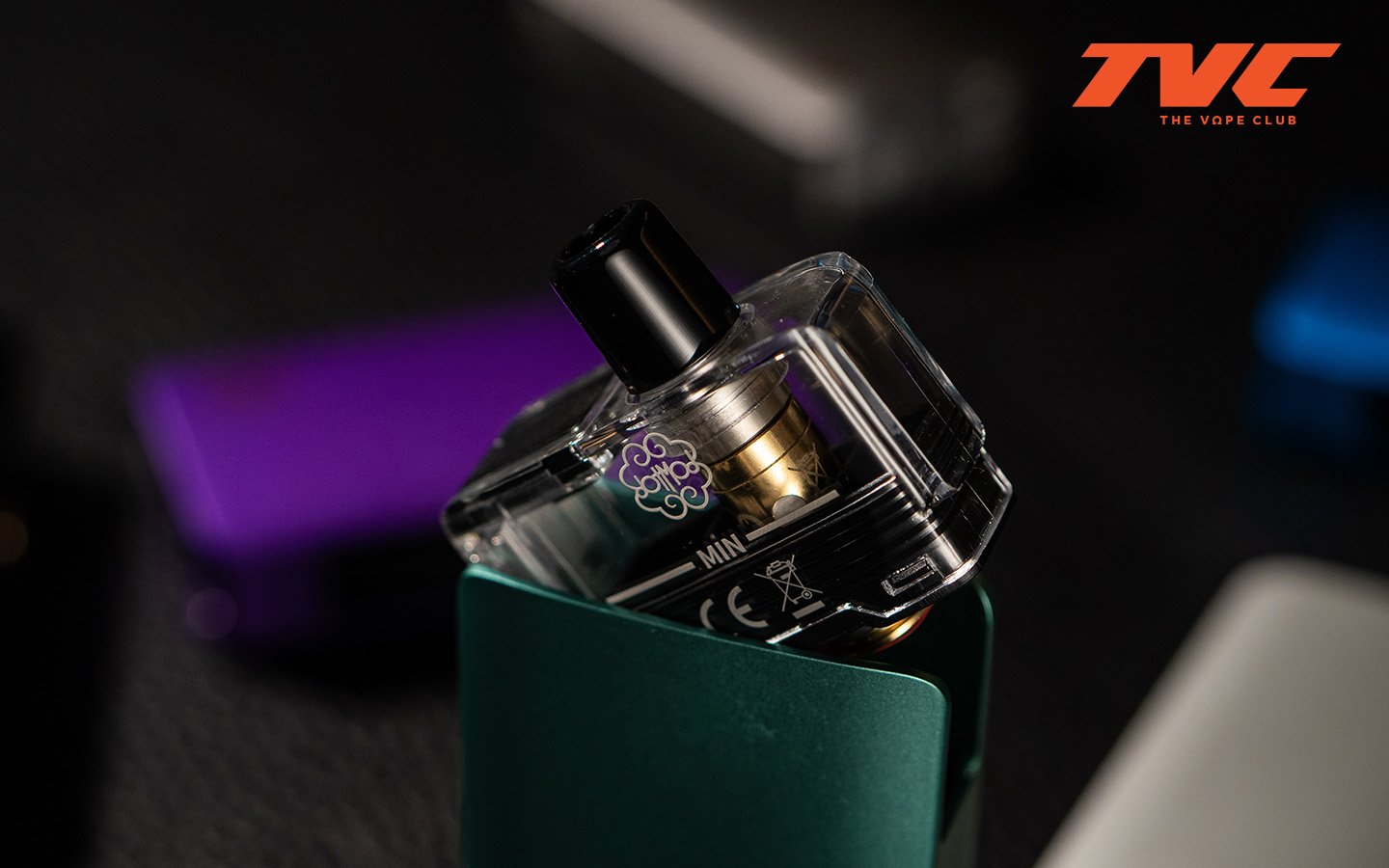
Of all the different problems that can happen to your vape device , leaking e-juice is definitely one of the most annoying. While e-juice is more affordable than it used to be, it’s certainly not cheap – and you don’t want to waste any if you can avoid it. Leaks can also make for a very messy situation if you accidentally spill e-juice all over your bag or on your desk.
Needless to say, this is a situation that you definitely want to prevent and in this article, I will provide some advice that can help players do exactly that. Each type of device leaks for a number of different reasons, which means that the way you identify and fix the problem will also be different, depending on the type of device you are using.
Before we go any further, however, let's talk about some common reasons why devices leak.
Why is my vape device leaking?
There are many different types of vape devices on the market today. However, before discussing how to solve the leaking problem with specific vapes, I want to talk about this topic in a more general way because, after all, all vapes leak for a few of the same reasons. Here are some of the common causes:
-
Inside the tank of any RTA or pod, there is a vacuum that keeps the vape juice from leaking between the seams or through the coil. The vacuum cannot form if its parts are out of alignment or the pod/tank gasket is damaged. The vacuum will also be significantly weaker if the tank or pod is filled to the top, leaving no room for air pressure to equalize.
-
Each RTA or pod is designed to work with a specific liquid consistency. Most vape juices on the market are moderately liquid to work well with as many devices as possible. However, some extremely liquid juices may not work well with RTAs that have very wide juice holes.
-
The vacuum pressure in a chamber or pod can become unbalanced due to both internal and external changes. In the case of internal factors, leaks usually occur after you have inhaled too hard into the device and overwhelmed its ability to self-regulate the pressure. Conversely, leaks can also occur due to changes in pressure from the air in the outside environment. For example, if you take your vape with you while driving up a mountain, the change in air pressure may force a small amount of e-juice out and eventually “leak” out of the device’s tank. This isn’t something you can control, so it’s generally a good idea to make sure your device is only half full if you plan on spending the day at high altitude.
Why is my atomizer/RTA leaking?
If you have a leaking atomizer/RTA, the first thing you need to do is make sure that the e-liquid you are using is compatible with your RTA. Most e-liquids are made up of a combination of propylene glycol (PG) and vegetable glycerin (VG) as a base. VG is the thicker of the two, which means that an e-liquid with a higher percentage of VG will be thicker than one that is mostly PG. Every e-liquid on the market will have a number printed on the packaging: 70/30, 60/40, or 50/50. Of course, a 70/30 e-liquid will be thicker than a 50/50 e-liquid.
If you are using a sub-ohm RTA, you should use at least 50% VG. A thinner e-juice can seep through the wick and coils and leak out the air holes at the bottom of the atomizer. If you often hear gurgling when you vape, it is likely that your e-juice is too thin.
Once you are sure that the e-liquid you are using is the right consistency for your atomizer, the next step is to disassemble the RTA and take a closer look. Follow these steps to figure out what the potential problem is with your atomizer.
Step 1: Completely disassemble the RTA, separate the metal parts on the top and bottom and remove the coil. Clean and dry the parts.
Step 2: Check all the rubber gaskets to see if any are frayed or have stretched out of place. If a gasket appears damaged, remove it and replace it. Most RTAs come with a complete set of replacement gaskets for this purpose.
B3: If you don’t find a broken gasket, don’t worry – the RTA is probably leaking because the components are out of alignment. Reassemble the atomizer slowly and carefully, making sure all the threads are aligned. All the tank components should screw together easily. If you find any components that are difficult to turn, it’s likely that the threads are crossed. Back them up and try screwing them together until they turn smoothly.
B4: If the burner continues to leak after you have done all the above steps, then try replacing the coil and cotton. For burners that use coils and cotton, proper cotton cleaning is also a necessary experience to prevent your burner from leaking.
Why are my Pod Systems leaking?
Compared to RTAs, pod systems are even more leak-proof. You'll rarely encounter a leaking pod system - but it does happen from time to time.
The thing to note when discussing leaks on pod systems is that you don’t need to worry too much unless you remove the cartridge and find a large amount of e-liquid at the base of the pod. If you find a little condensation at the base of the pod, this is common and can be quickly removed with a cotton swab.

Modern pod devices are built with different anti-leak systems.
For today's pod systems, manufacturers have created different leak-proof methods for their products. A typical example is dotMod's latest pod system device: dotMod dotPod Max . The device has an S-shaped airflow combined with 5 silicon layers to help keep the essential oil better, making leakage on this device impossible.
If your pod systems are experiencing leaks, follow these steps to troubleshoot:
-
When you fill your cartridge, don’t fill it all the way to the top – always leave some space. If you don’t leave any space for air, the cartridge won’t be able to create the vacuum inside to hold the liquid.
-
If your pod system uses a replacement OCC, make sure the OCC is properly aligned and pushed in all the way. Some replacement OCCs for pod systems use a locking mechanism that prevents them from being pushed in all the way unless properly aligned. So sometimes fixing a leaky pod device is as simple as pushing the OCC in all the way.
-
Try to minimize the amount of air pressure you use when taking a puff on your device. A pod system typically has a tight airflow pattern to deliver an MTL draw. If you puff too hard on a device with a tight airflow pattern, you will push excess e-juice through the pod’s wick and flood your coil. If your device has a flooded coil, e-juice will leak from the bottom of the cartridge – so always use a gentle draw on your pod system.







![[H] dotMod dotAIO X Pro](http://thevapeclub.vn/cdn/shop/files/h__dotmod_dotaio_x_pro_1faf8f9936ab41d0acec625b36f445b1.png?crop=center&height=20&v=1723177235&width=20)
![[H] dotMod dotAIO X Pro](http://thevapeclub.vn/cdn/shop/files/dotmod_dotaio_x_pro_black_19673d303b75438a9b5e0dddb261b88a.png?crop=center&height=20&v=1723177234&width=20)






